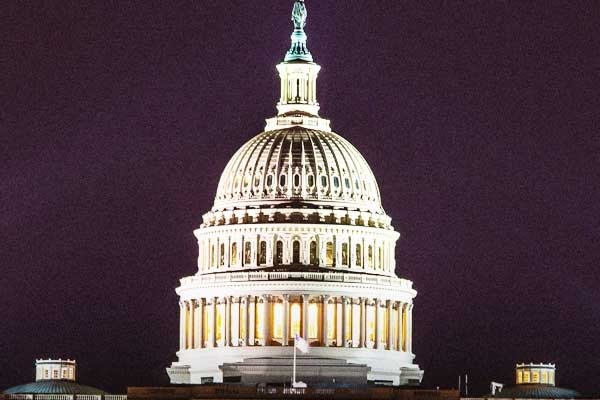
(Image source from: x.com/WhiteHouse)
The US government has officially closed down after Democrats refused to support a Republican short-term funding plan that did not meet their requirements. As this decision took effect right at midnight, government funding has ceased, leaving those in the Capitol uncertain about what comes next. This marks the first government shutdown in more than six years, recalling the 2018-2019 situation when government funding stopped for five weeks, including during New Year’s, while Trump was in office. During a shutdown, non-essential services will stop, temporarily leaving many civil servants unpaid, and possibly affecting the distribution of several social safety net benefits. Essential workers, like military staff, must continue to work without pay, while non-essential federal employees will be placed on unpaid leave. According to estimates from the impartial Congressional Budget Office, up to 750,000 federal employees might face temporary furloughs, even if Trump does not move to dismiss anyone permanently.
The president has intensified the situation by informing reporters on Tuesday that his administration might permanently let go of many federal workers if a shutdown occurs. Usually, the government puts non-essential employees on temporary leave when funding runs out and pays them back when operations resume. When funding is lost, the law requires federal agencies to stop their work and put their "non-excepted" employees on leave. "Excepted employees" are those whose work is necessary for safety and security. They will continue to work but won’t receive payment until the shutdown is over. As a result, medical care, border security, law enforcement, and air traffic control are expected to keep running during the shutdown. Social Security and Medicare payments will continue, but processes like benefit verification and card issuance might halt. Operations such as NASA's space endeavors, Trump’s immigration policies, and some health-related work at the Food and Drug Administration and the United States Department of Agriculture will also persist during a shutdown. However, if the standoff in Congress continues for a while and unpaid employees stop coming in, there may be delays for travelers.
Typically, during shutdowns, essential workers are allowed to carry out their duties as usual, some even without their regular pay, while non-essential federal employees are put on temporary unpaid leave. Previously, these workers have received their back pay once the shutdown ended. This means that programs funded by the federal government, such as food assistance, food inspections, government preschools, student loan disbursements, immigration hearings, and national park operations might be limited or closed. Although the overall economy might not feel the immediate effects, a long-term shutdown could hinder economic growth, disturb markets, and diminish public trust. According to a BBC report, this shutdown is expected to be larger than the one that occurred in late 2018 during Trump’s presidency when some funding bills were approved. Analysts have predicted that this shutdown could reduce economic growth by about 0.1 to 0.2 percentage points for every week it lasts.
Budget disputes in the US have become common as political disagreements intensify. Currently, Democrats are demanding that any funding legislation includes extra healthcare support, while Republicans argue that these matters should be addressed individually. Trump has intensified the situation. Before the vote on Tuesday, he warned that if the government closes, he would terminate programs favored by Democrats and lay off more federal employees. "Many people will be let go," he mentioned to journalists. "They will be Democrats." This kind of job loss could cause further talent drain from the government. Over 150,000 employees are expected to exit federal jobs this week after accepting buyouts, marking the largest departure in 80 years. Additionally, tens of thousands have already been dismissed this year. Trump has also withheld billions that Congress allocated, leading some Democrats to question their reasons for supporting any funding proposals.
With no possibility of compromise in Congress, it is uncertain how long a government shutdown might last. Since 1981, Congress has closed the government 15 times, most often for just a day or two. The last closure, during Trump's initial term, was the longest. Right now, healthcare is the main issue. Democrats are insisting that any funding proposals must also secure ongoing Affordable Care Act subsidies that will end this year. If not addressed, health expenses for 24 million Americans will increase significantly, especially in Republican-led states like Florida and Texas that have not implemented other parts of the law that offer coverage to those with low incomes. Democrats are also trying to make sure that Trump cannot reverse these changes if they become law. Republicans claim they are willing to negotiate a solution but accuse Democrats of using the budget as leverage to cater to their supporters as the 2026 midterm elections approach, where control of Congress is at risk.







